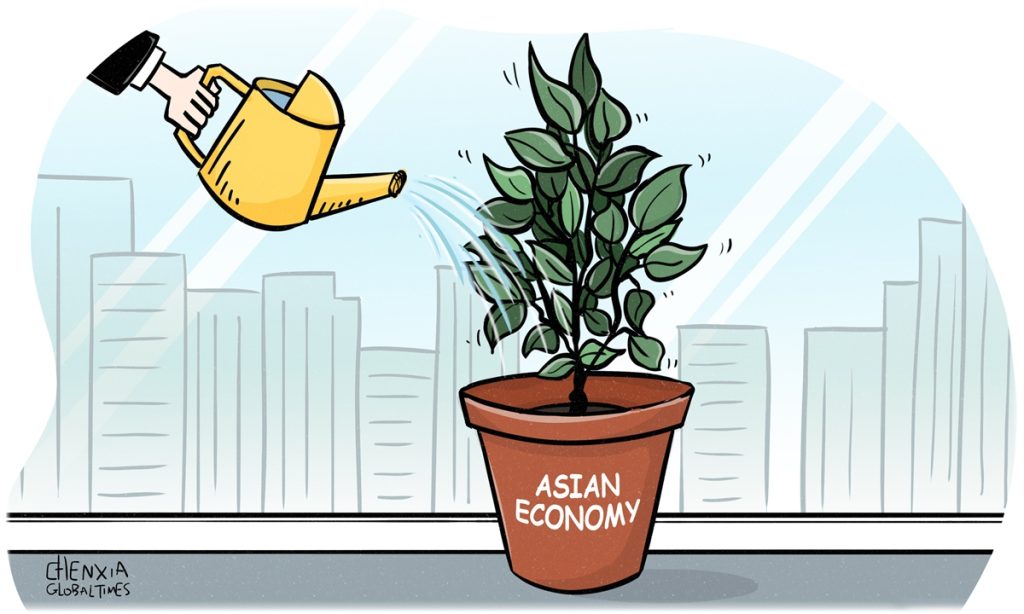GT Voice: Cambodia canal part of larger regional connectivity progress

Cambodian Deputy Prime Minister Sun Chanthol said the country plans to cut shipping through Vietnamese ports by 70 percent as a result of the $1.7 billion Techo Funan Canal project connecting the Mekong River basin to the Cambodian coast, Reuters reported on Tuesday.
While the discussion surrounding whether the China-funded canal will reduce Cambodia's dependence on Vietnamese ports for shipping has attracted attention, the real significance of the project lies not only in its demonstration of the strong collaboration between China and Cambodia, but also its reflection of the broader trend of regional economic integration.
The project is of great significance to Cambodia's economic development, as it will establish a new trade route that enhances economic and trade collaboration with China. By reducing transportation times, the canal will significantly decrease logistics costs and facilitate intra-regional trade, benefiting Cambodia's foreign trade, particularly in the China-Cambodia trade relationship.
More direct access to the Chinese market will not only boost Cambodia's trade efficiency but also attract increased Chinese investment, bringing benefits for the local population.
The canal may understandably raise certain concerns in Vietnam. But it should be noted that the Techo Funan Canal project is aimed primarily at improving Cambodia's logistics efficiency. Its indirect benefits and enhanced regional cooperation could still open up new opportunities for Vietnam. Of course, the realization of these opportunities will necessitate close cooperation and coordination between Vietnam and Cambodia, as well as among the countries along the Mekong River.
Meanwhile, it is important to recognize that the Techo Funan Canal project should not be viewed solely as a bilateral issue between Cambodia and Vietnam. Taking a broader perspective, the project is just part of the development and enhancement of regional infrastructure connectivity linking China and Southeast Asia. It is also an inevitable development as China and the ASEAN Free Trade Area have reached a certain level of development, because the whole region needs better connectivity.
The success of the China-Laos Railway may be the reason that Southeast Asian nations like Vietnam are building or planning to build high-speed railways to promote regional economic integration and connectivity.
For instance, in December 2023, Vietnam and China signed dozens of cooperation agreements on building several high-speed railways linking to China, according to media reports. Existing road and air connections between China and Vietnam are also being enhanced.
Thailand is also an active regional player. The China-Thailand railway, which is an important part of the trans-Asian railway network, will be Thailand's first standard-gauge high-speed railway. The line will see trains running from Bangkok to the border town of Nong Khai, where a bridge is expected to connect it with the China-Laos Railway, making it possible to travel by train from Bangkok through Laos and then to Kunming in Southwest China's Yunnan Province.
Whether it is a rail network under construction or planning in countries like Vietnam and Thailand, or a planned canal project in Cambodia, these initiatives can become integral components of a future interconnected regional transportation network. Such infrastructure efforts may point to the future of regional economic cooperation as being highly connected, mutually beneficial and win-win for all involved.
As these projects will facilitate the flow of goods, capital, technology and people, Southeast Asian countries stand to gain significant advantages in terms of promoting regional economic integration, enhancing accessibility for their citizens and boosting the efficiency of goods movement.
Of course, challenges may arise with any large-scale infrastructure endeavor. But by working together, it is believed that these challenges can be overcome through close cooperation and consultation among governments, so as to realize the common development and prosperity of the region.